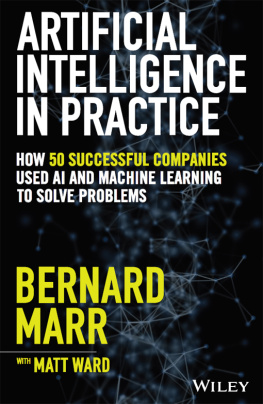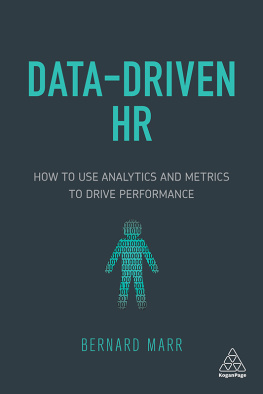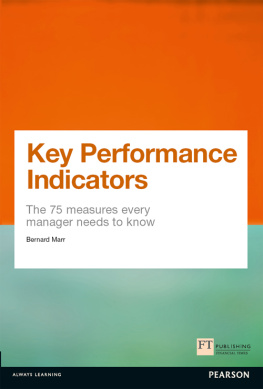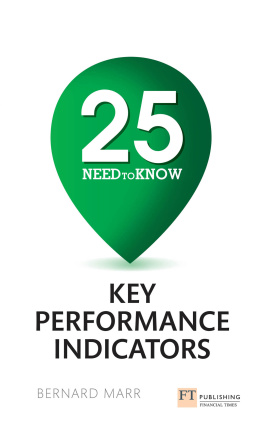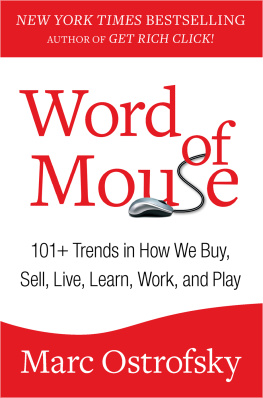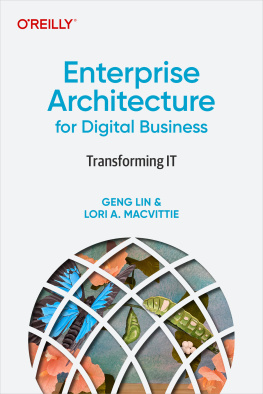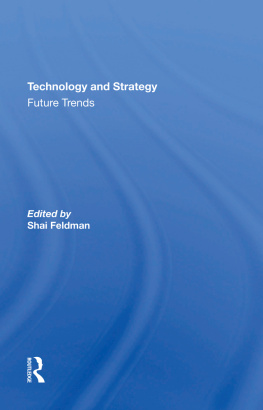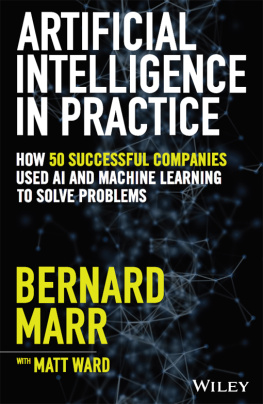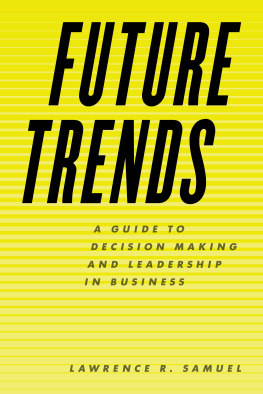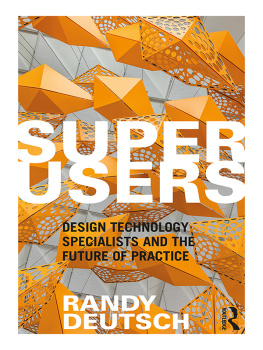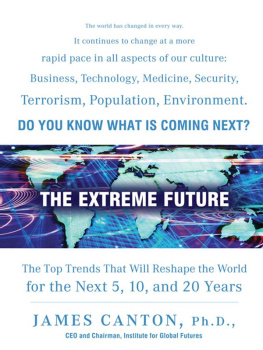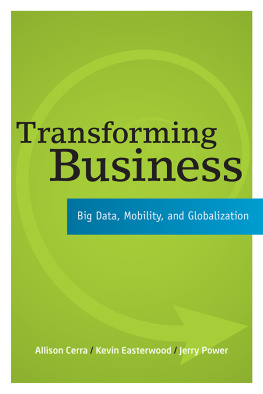
TECH TRENDS IN
PRACTICE
THE 25 TECHNOLOGIES THAT
ARE DRIVING THE 4TH
INDUSTRIAL REVOLUTION
BERNARD MARR
This edition first published 2020
2020 by Bernard Marr
Registered office
John Wiley & Sons Ltd, The Atrium, Southern Gate, Chichester, West Sussex, PO19 8SQ, United Kingdom
For details of our global editorial offices, for customer services and for information about how to apply for permission to reuse the copyright material in this book please see our website at www.wiley.com.
All rights reserved. No part of this publication may be reproduced, stored in a retrieval system, or transmitted, in any form or by any means, electronic, mechanical, photocopying, recording or otherwise, except as permitted by the UK Copyright, Designs and Patents Act 1988, without the prior permission of the publisher.
Wiley publishes in a variety of print and electronic formats and by print-on-demand. Some material included with standard print versions of this book may not be included in e-books or in print-on-demand. If this book refers to media such as a CD or DVD that is not included in the version you purchased, you may download this material at http://booksupport.wiley.com. For more information about Wiley products, visit www.wiley.com.
Designations used by companies to distinguish their products are often claimed as trademarks. All brand names and product names used in this book are trade names, service marks, trademarks or registered trademarks of their respective owners. The publisher is not associated with any product or vendor mentioned in this book.
Limit of Liability/Disclaimer of Warranty: While the publisher and author have used their best efforts in preparing this book, they make no representations or warranties with respect to the accuracy or completeness of the contents of this book and specifically disclaim any implied warranties of merchantability or fitness for a particular purpose. It is sold on the understanding that the publisher is not engaged in rendering professional services and neither the publisher nor the author shall be liable for damages arising herefrom. If professional advice or other expert assistance is required, the services of a competent professional should be sought.
A catalogue record for this book is available from the Library of Congress.
A catalogue record for this book is available from the British Library.
ISBN 978-1-119-64619-8 (hardback) ISBN 978-1-119-64621-1 (ePDF)
ISBN 978-1-119-64620-4 (epub)
Cover design: Wiley
Cover image: Jakarin2521/Getty Images
To my wife Claire, and my children Sophia, James, and Oliver;
and everyone who will use these amazing technologies
to make the world a better place.
Introduction
We have never lived in a time of faster and more transformative technological innovation. Incredible technologies like artificial intelligence, blockchains, smart robots, self-driving cars, 3D printing, and advanced genomics, together with the other tech trends covered in this book, have ushered in a new industrial revolution. Similarly to how steam, electricity, and computers have respectively been the driving forces of the first three industrial revolutions, this fourth industrial revolution is driven by the 25 technologies featured in this book. And as with the previous industrial revolutions, this fourth industrial revolution will change businesses, reshape business models, and transform entire industries. These technologies will change how we run our businesses, what jobs we will do, and many other aspects of how we function as a society.
For most leaders it can be very challenging to keep up with the speed at which many of these new technologies are emerging. As a futurist and strategic advisor to many of the most innovative companies and governments in the world, it is my job to help leadership teams understand and prepare for the impact of these technologies. With this book, I want to provide an easy-to-understand, state-of-the-art overview of the key technologies underpinning this fourth industrial revolution and outline how they are practically used by businesses today, as well as provide some tips on how to best prepare yourself and your organization for the transformation they bring.
I have chosen these 25 technology trends because I believe that they are the key ones every business leader needs to be aware of today. There are some technologies in this book that are more foundational like big data, 5G, and artificial intelligence and then there are others that overlap with or use technologies like big data, 5G, and artificial intelligence like self-driving cars, chatbots, or computer vision. My aim is to discuss the key technologies and applications that are having the biggest impact on businesses today and the medium-term future.
Before you dive into the various future tech trends, I just want to say that the fourth industrial revolution offers us huge opportunities to make our world a better place and use these technologies to address some of the worlds biggest challenges from climate change, to inequality, and from hunger to healthcare. We shouldnt waste them.
As with any new technologies, there is also huge scope to exploit them for evil and we have to put in place safeguards to ensure that doesnt happen. What is sure is that all these technologies will change businesses, reshape business models, and transform entire industries.
With many of the technologies featured in this book the rate of innovation and development is simply mind-boggling. Every week there are new breakthroughs and new applications even I didnt think possible just a few years ago. It is my job to keep a close eye on all this and I share my insights in my Forbes articles, YouTube videos, and across my social media channels. I would like to invite you to connect with me on LinkedIn, YouTube, Instagram, Twitter, and Facebook. I also have a weekly newsletter in which I share all the latest developments. If you would like to keep up to date then you can sign up to the newsletter on my website www.bernardmarr.com, where you can also find many more articles, videos, and reports on future tech trends.
TREND 1
Artificial Intelligence and Machine Learning
The One-Sentence Definition
Artificial intelligence (AI) and machine learning refers to the ability of machines to learn and act intelligently meaning they can make decisions, carry out tasks, and even predict future outcomes based on what they learn from data.
What Is Artificial Intelligence and Machine Learning?
Speaking in 2016, Stephen Hawking said, Success in creating AI would be the biggest event in human history. Now, its no secret that technology trends often create a lot of hype. But in the case of AI, the hype is warranted. Like Hawking, I believe AI will transform our world and how we live in it.
AI and machine learning already plays a bigger role in everyday life than you might imagine. Alexa, Siri, Amazons product recommendations, Netflixs and Spotifys personalized recommendations, every Google search you make, security checks for fraudulent credit card purchases, dating apps, fitness trackers all are driven by AI.
AI and machine learning is the foundation on which many other technology trends in this book are built. For instance, without AI, we wouldnt have achieved the amazing advances in the Internet of Things (IoT, Trend 2), virtual reality (Trend 8), chatbots (Trend 11), facial recognition (Trend 12), robotics and automation (Trend 13), or self-driving cars (Trend 14) to name just a few.
Next page

